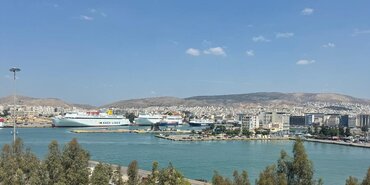CAMO or AMO?

A Continuing Airworthiness Management Organisation (“CAMO”) insured by ITIC was appointed by the owner of 3 business jet aircraft to provide a complete continuing airworthiness management service. The aircraft were operated on a non-commercial basis and the aircraft type was within the scope of the CAMO’s approval from the European Aviation Safety Agency (“EASA”).
EASA issued an airworthiness directive (“AD”) for the aircraft type which required the replacement of a small part of the undercarriage retraction mechanism. The replacement was to be completed by a specific date. The maintenance programmes called for all 3 aircraft to undergo scheduled maintenance
at the operator’s designated Approved Maintenance Organisation (“AMO”) prior to this date, therefore the CAMO notified the AMO of the requirement to comply with the directive during the maintenance.
On two of the aircraft the AMO correctly fulfilled the requirements of the directive. However, on the third aircraft, after the old part was removed a mechanic inadvertently reinstalled it instead of the new part. The aircraft technical records were amended to indicate that the AD had been incorporated into all three aircraft and the CAMO released the aircraft back to the owner for continued operation.
A month later during a turnaround at an airfield a sharp-eyed mechanic spotted the old part in the undercarriage mechanism. This was brought to the attention of the crew, who informed the aircraft owner. As the aircraft was now in breach of the airworthiness requirements the owner grounded it until the situation was resolved.
The Owner accused the CAMO of negligence and claimed for losses alleged to have been incurred as a result of loss of use of the aircraft whilst the aircraft was restored to full airworthiness. The owner alleged that the CAMO breached their duty of care in failing to arrange for all applicable ADs to be applied. Further, the owner claimed that, as his contract with the CAMO contained a clause which stated that in the case of breach of contract by either party the contract would automatically become null and void, he was in effect left with no approved CAMO for all 3 aircraft. He repudiated the contract.
ITIC disputed the owner’s claim on the grounds that under EU Regulation a CAMO is required only to organise the maintenance, not to check it. The AMO, who had been designated by the owner, had been informed by the CAMO of EASA’s AD requirements over the phone. This was followed up in writing, and evidence of these instructions was provided. Further, as there was no breach, the repudiation of the contact was unjustified. ITIC’s defence of the CAMO was successful with the owner finally agreeing to re-direct his claim to the AMO. ITIC covered the fees of the solicitor appointed to defend the CAMO.
- Date
- 24/09/2024





